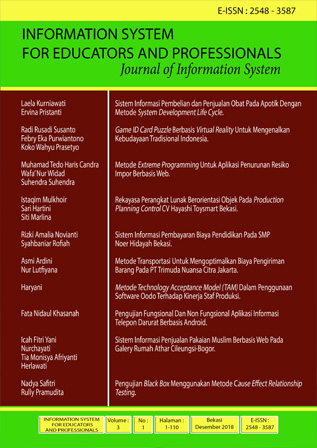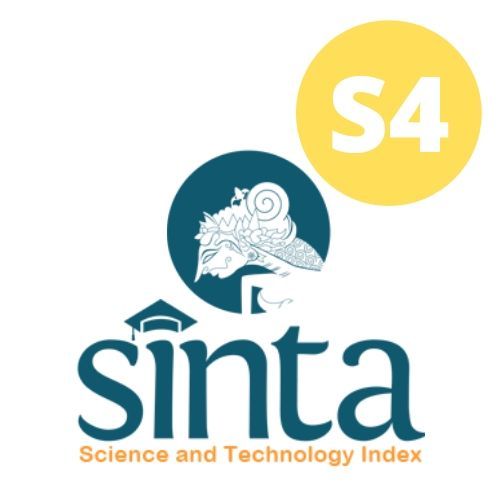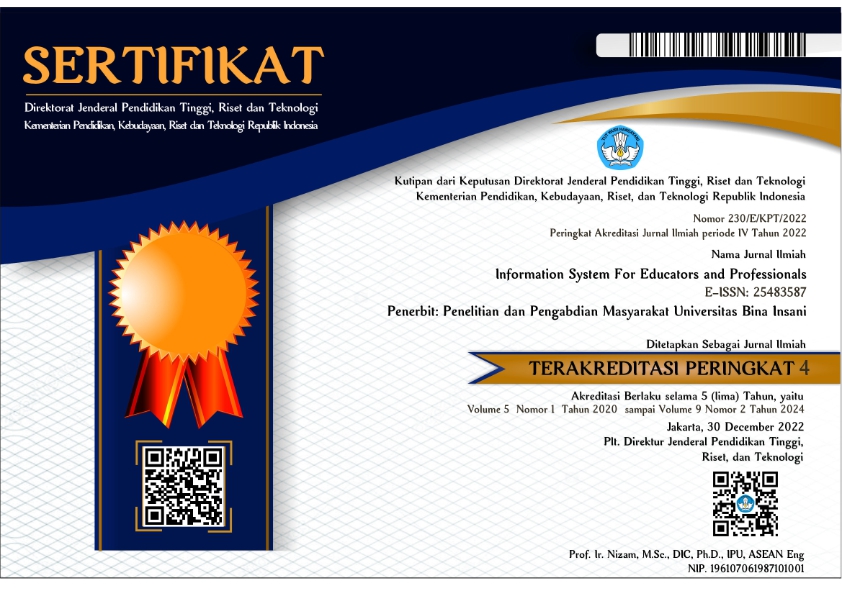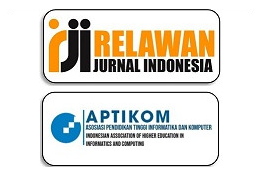Metode Extreme Programming Untuk Aplikasi Penurunan Resiko Impor Berbasis Web
Abstract
Abstrak: Pada perusahaan dagang yang menjalankan aktivitas impor penetapan kode kode Harmonize System (HS) merupakan salah satu faktor penting. Kesalahan dalam penetapan kode HS dapat berakibat pada proses impor barang menjadi terhambat karena harus menunggu surat penetapan tarif dan/atau nilai pabean, menyebabkan resiko impor berupa denda dan turunnya prioritas jalur impor. Penelitian ini bertujuan untuk menyediakan solusi terhadap permasalahan yang ada melalui pembuatan aplikasi berbasis komputer. Aplikasi dikembangkan melalui pendekatan extreme programming dan pemodelan UML. Bahasa pemrograman yang digunakan untuk pengembangan adalah PHP 5.6 dan pengelola basis data menggunakan SQL Server 2012. Dengan adanya aplikasi diharapkan resiko impor terkait penetapan kode HS dapat menurun.Kata kunci: Aplikasi, Extreme Programming, Impor, Resiko, UML.
Abstract: In trading companies that carry out import activities the establishment of Harmonize System Code (HS code) is an important factor. Mistake in the determination of HS code can result in the process of importing goods being hampered because they have to wait for the customs stipulation letter, causing import risk in the form of fines and the decline in priority of import lines. This study aims to provide solutions to existing problems through the creation of computer-based applications. The application was developed through extreme programming and UML modeling approaches. The programming language used for development is PHP 5.6 and database management system using SQL Server 2012. With application, It is expected that the import risk associated with the determination of the HS code can be decrease.
Keywords: Application, Extreme Programming, Import, Risk, UML
References
Ambler S. 2002. Agile Modeling: Effective Practices for eXtreme Programming and the Unified Process, 1e. New York: Wiley. 400 p.
Apulu I, Latham A. 2011. An Evaluation of the Impact of Information and Communication Technologies: Two Case Study Examples. International Business Research. 4 (3): 3–9.
Cahyodi SC, Arifin RW. 2017. Sistem Informasi Point Of Sales Berbasis Web Pada Colony Amaranta Bekasi. Information System For Educators And Professionals. 1 (2) : 189–204.
Chukwunonso F, Omoju JO, Ikani D, Ribadu MB. 2011. Management of Information Technology for Competitive Advantage: A Savvy Case Study. Journal of Scientific Research. 1 (2): 121–129.
Das K, Gryseels M,Sudhir P,Tan KT. 2016. Unlocking Indonesia’s Digital Opportunity. 1-28 p.
Dennis A, Wixom B, Tegarden D. 2015. System analysis & design : an object-oriented approach with UML, 5e. Hoboken, NJ: Wiley. 544 p.
Direktur Jenderal Bea dan Cukai. 2016. Peraturan Direktur Jenderal Bea dan Cukai Nomor 16 Tahun 2016 tentang Petunjuk Pelaksanaan Pengeluaran Barang Impor untuk Dipakai. Indonesia.
Menteri Keuangan. 2017. Peraturan Menteri Keuangan Republik Indonesia Nomor 6/Pmk.010/2017 Tent Ang Penetapan Sistem Klasifikasi Barang Dan Pembebanan Tarif Bea Masuk Atas Barang Impor. Indonesia: Menteri Keuangan Republik Indonesia.
Langer P, Mayerhofer T, Wimmer M, Kappel G. 2014. On the usage of UML: Initial results of analyzing open UML models. In: Modellierung 2014., p 289–304.
Matharu GS, Mishra A, Singh H, Upadhyay P. 2015. Empirical Study of Agile Software Development Methodologies. ACM SIGSOFT Softw. Eng. Notes 40: 1–6.
Rumpe B. 2004. Agile Modeling with the UML 1 Portfolio of Software Engineering Techniques. In: Radical Innovations of Software and Systems Engineering in the Future. 9th International Workshop., p 297–309.
Wake WC. 2001. Extreme programming explored, 1e. Boston, United States: Addison-Wesley. 148 p.













